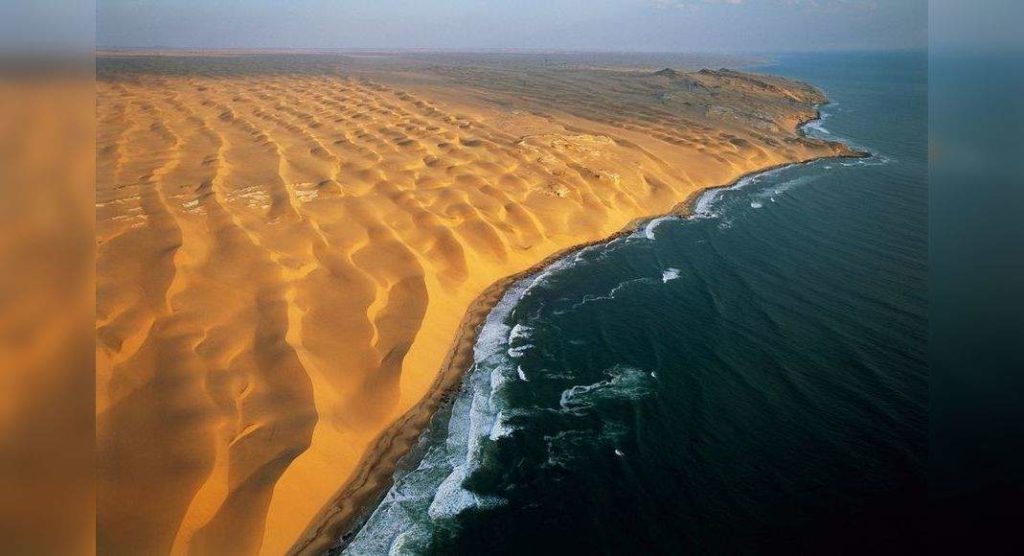Sandy beaches. Glittering deserts. While sand covers a whopping 20 percent of the planet’s surface, most people take sand for granted.
Here Are 12 Amazing Facts About Sand

1) Sand consists mainly of ground-up quartz. However, it can also include other minerals such as feldspar and rock fragments which give it different colors and properties…
2) Granite typically produces white or pink sand with large grains, whereas basalt produces black, dark grey, or green sand with smaller grains. Sand from the hot desert areas can be almost any color including pink, brown, yellow, and orange due to the presence of iron oxide.
3) Sand consists of extremely small particles which are angular, smooth, and irregular in shape. In sand from the desert areas near Death Valley, USA it is common to find sand grains that are completely round due to abrasion by other sand grains as they tumble around in the water during flash floods. The sand from this area also includes some larger pieces of quartz or basalt pebbles called ‘agates’.
4) Sand grains exposed to the wind will develop a naturally rounded surface similar to a river pebble exposed to a constant flow of water over many years. This action is known as ‘surface attrition’ and abrades away any corners or sharp edges on the sand grain. Abrasion can reduce a sand grain from an original size of 1mm to as little as 0.001mm over a few years.
5) Sand grains are worn down by the constant flow of wind across an area of land which can contain many thousands to millions of sand grains. This creates a flat surface and rounding of the grains is only up to about 0.5mm in diameter depending on the grain size, mineral type, and distance they have traveled. Around 10-100 meters from their origin, sand grains still maintain a sharp angularity due to there being no further material available for abrasion along this path. Read some interesting facts about darkness.

6) Desert ‘dunes’ (more accurately called ‘barchan dunes’) often appear like rolling ocean waves when viewed from above and can be several kilometers long with some reaching heights over 150 meters! The angle at which sunlight reflects off each layer of sand is different and this causes the sand to appear in a multitude of colors and tones when illuminated from various angles.
7) Desert sand originating from mountains contains large quantities of broken rock fragments which can be extremely abrasive. Moving sand grains grind into other sand grains causes them to become rounded more quickly than sand without rocks in it, such as that sourced from coastal deserts or riverbeds near beaches. This makes such sand unsuitable for use in sand-boarding or sandcastles.
8) Some desert sand has been found to contain tiny fragments of opal carrying silica gel which forms within volcanic lava flows after they have cooled down and solidified. These particles provide an abrasive effect much like the fragments of rock and give the sand a slight glistening effect.
9) Sand that has traveled very long distances over many hundreds or thousands of years may end up being deposited in sandstone rocks where its journey is permanently recorded as a ‘fossil’ for scientists to study. Fossils can also be created underwater by sand grains accumulating on the sea-bed and then being compacted into sandstone by the weight of sediments above it. Over time, sandstone turns into the sand again if the conditions are right…
10) Sand moves around much more than most people think, both horizontally (transported along waterways, deserts, etc.) and vertically (deposited under cliffs or mountains). It’s amazing how sand can form deep within the desert landscape but also continue to move even hundreds of kilometers out to sea.

11) Sand is moved around the ocean in a continuous process called ‘longshore drift’ which means sand grains are carried from several meters above the shoreline into deeper water by offshore currents and then deposited on beaches or sand bars when they begin to slow down. This creates sandbars which may eventually become sand islands connected to the mainland. Dense vegetation needs frequent disturbance to maintain itself which can result in sand being deposited behind it during tropical storms, where it can form ridges up to 10m high!
12) Sometimes sand accumulates on a beach over many decades causing a ridge of sand to build up until it reaches some height where it becomes more resistant to further erosion by wave activity.
